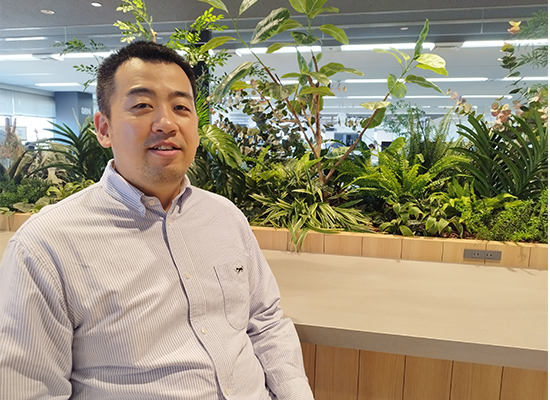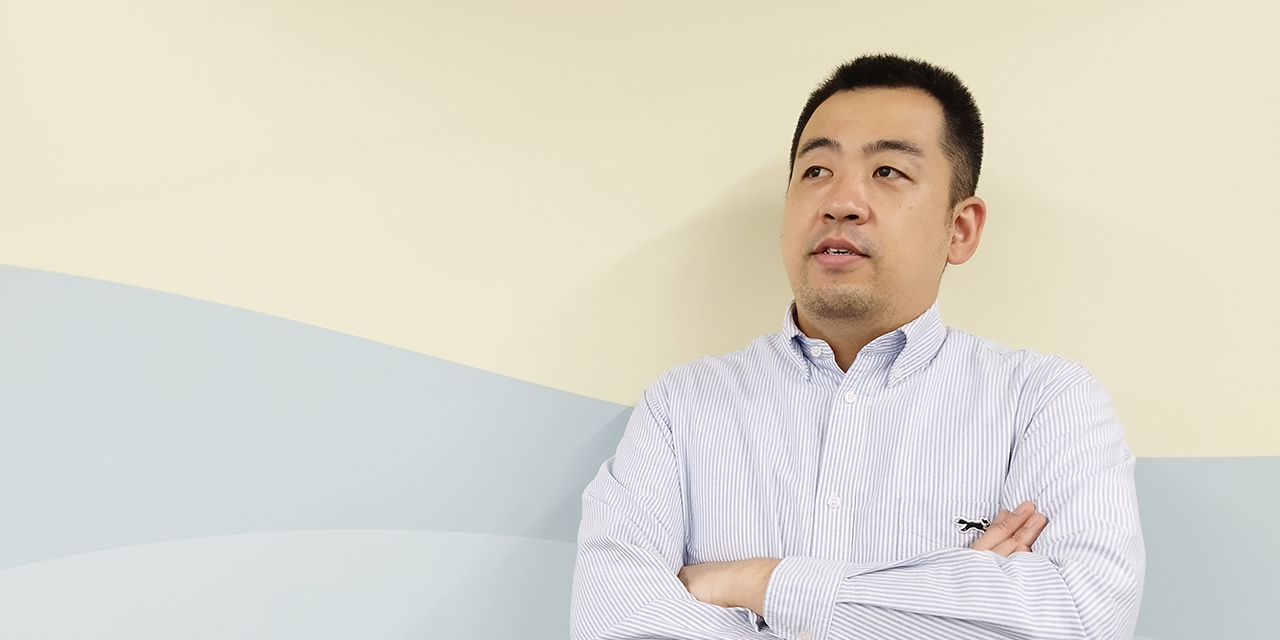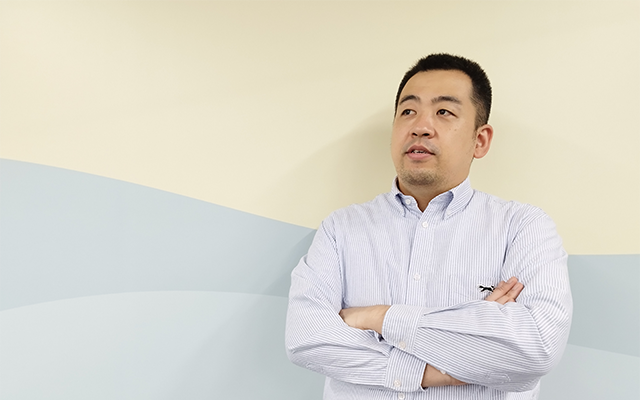I majored in information science at university, so I had very few opportunities to delve into fields other than computers. It wasn't until I entered graduate school and embarked on interdisciplinary research that focused on computer science and human cognition that I first encountered cognitive science. Specifically, my research involved studying reaction times when a car in front brakes suddenly or how response times are affected when a person feels drowsy while driving. By advancing research on human cognition, we might be able to develop technologies to prevent accidents. I find it enjoyable to conduct research while imagining how the research results could be applied. This has led me to want to continue my research activities even after graduation. This is the fundamental basis of my desire to conduct research on technology that supports solving social issues.
Inspired by the desire to disseminate research results that benefit people
Tackling the most challenging problems
After joining the company, I was assigned to a project to develop eye tracking technology (*1). Eye tracking technology is a technology that uses images captured by a camera to find out where the user is looking. We usually use a mouse or touchpad to operate a computer, but this technology is especially useful when we cannot move both hands. This useful technology detects where the user is looking on the computer screen and performs the operation the user wants to perform.
In order to determine where the user is looking, eye movements must be accurately detected. However, different people have different eye shapes and reflections caused by glasses, which can reduce the accuracy of gaze detection. In order for this technology to be usable by many people, it is necessary to envision a variety of situations comprehensively, and to resolve the decline in detection accuracy that occurs in each situation. Looking back, it was very difficult to identify these issues.
At the time, in order to solve the problem of detecting the subtle differences in the shape of each person's eyes with high accuracy, I tried to create a computational model on my own. However, it took a long time to collect a large amount of data and build a computational model to solve the problem, and I was not sure if I could produce results within the limited time available. When I became aware of this, other issues started to snowball, and as a result, I couldn’t start other important tasks that needed to be done, with the deadline looming ever closer. The critical issues that needed to be addressed first became obscured, causing delays in the team's progress and disrupting our plans.
Experiencing the joy of commercializing eye tracking technology
The words, "Don't live in the past" are particularly inspiring to me. On a radio program I listened to regularly, I heard someone interpret the phrase as, “It's not about erasing painful memories and bitter experiences from the past, but rather remembering this phrase to move on to the next step”. This touched and encouraged me. I remembered these words even when I was depressed, because of failure.
So back to our challenging situation. I regained my composure, analyzed the facts, and reexamined the direction of development with the project leader. Creating a computational model to detect each individual eye with high precision would be difficult with the current resources available, so I took the leader's advice and shifted the task to the development of a general-purpose model. As a result, we were able to propose a solution that would not degrade detection accuracy even when scenery was reflected in the glasses (*2). Even now, I am grateful to the leader, who guided me at the time.
Later, we succeeded in installing the eye tracking technology using a small camera into a personal computer (*3), and I experienced it as a product for the first time, available to the general users. Since I joined the company with the desire to create technology that would actually be used, I was thrilled when I saw how my technology could be used for the first time during an exhibition. I was truly delighted when I received positive feedback and compliments from customers.

Building expectations based on trust
During my student days, I worked part-time in a classroom aimed at enhancing children's creativity. I would build various things with blocks together with the children and explain everyday physical phenomena using easy-to-understand examples. I used to compile the children's achievements in the classroom in a newsletter-like format and hand it to their respective parents. I always enjoyed creating it, because I wanted to convey what the children were thinking. As I continued this activity, I began to hear expressions of gratitude from the children's parents, saying, "Thank you for taking care of our children. Please keep up the good work." Looking back now, I believe I had embarked on an important cycle of trust and building expectations. In R&D work, this element of trust works very much in the same way, in R&D work. Even if you are a "stranger" at first, once people trust you, they will in turn come to have high expectations of what you can for them. That's why I strive to meet those expectations and, in turn, work to keep earning people’s trust.
Towards the realization of a secure and safe society
I am currently conducting research on privacy-conscious human pose estimation technology using millimeter-wave sensor (*4). Inexpensive millimeter-wave sensors that are widely available in the market had too little point cloud information to perform pose estimation. However, I have extended this technology by using time-series point cloud information and realized pose estimation even with common millimeter-wave sensors. This enables detailed analysis of patient behavior and the elderly before and after falls, etc., without installing cameras in hospitals and nursing care facilities. Recently, our team presented this technology at an international conference's demo session, and it received a positive response from attendees, including those who resonate with the envisioned use cases, earning us an award (*5). I would be delighted if we can develop technology that assists users in leading secure lives.

Recently, I have been having more and more opportunities to have conversations with professors in the humanities and social sciences due to my research. In the future, I would like to use digital technology to clarify social and psychological aspects of behavior, such as how people think and why they behave the way they do, in order to promote future research that will help solve social issues. Obtaining research methods and findings from the humanities and social sciences is important when considering the social implementation of technology. For example, this involves social issues such as preventing special fraud crimes, improving the quality of life in an aging society, and addressing educational disparities. I aim to use my past experiences to solve these issues and continue to create technologies that will be closely aligned with society.

Converging Technologies Laboratory
Graduate School of Information Science and Electrical Engineering
Joined Fujitsu in 2012
Maintain a cycle of expectation and trust
Editor's note
Takahiro’s genuine feelings of gratitude towards those who supported and nurtured him in the past strongly touched me. He likened his career in R&D to origami. Origami can create various shapes from a single piece of paper. Just as combining multiple pieces of origami can create intricate designs, he explained that R&D is similar in that you develop and combine various techniques finally to achieve what you are aiming for. He also advised that no matter how busy your day of research or work may be, you should always make time to do what you love, a sentiment that resonated with me.
-
(*1)
-
(*2)
-
(*3)
-
(*4)
-
(*5)
- Notes(*1) only available in Japanese





